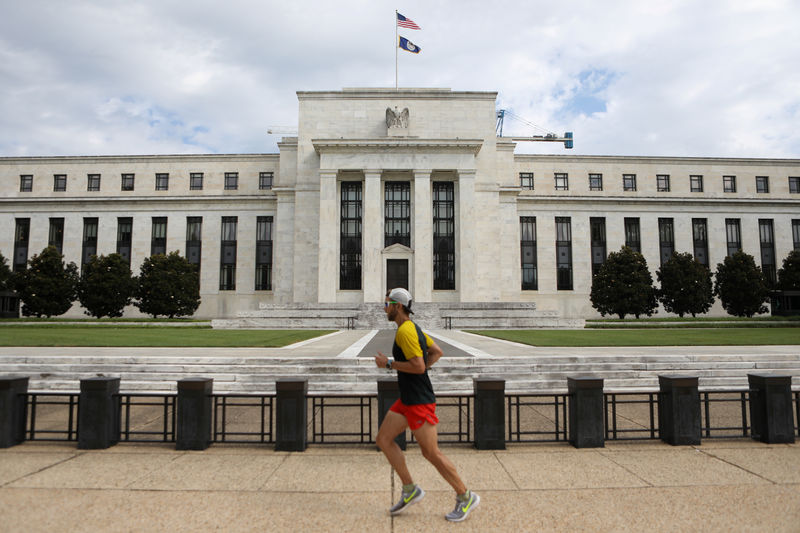Investing.com - The Federal Reserve kept interest rates and monthly bond buying steady, though signaled that two rate hikes could be on the cards by the end of 2023 amid forecast for a faster economic growth and inflation.
The Federal Open Market Committee left its benchmark rate unchanged in the range of 0% to 0.25% and said it would continue its $120 billion monthly bond purchases.
The Fed has come under pressure to signal a willingness to begin taking its foot off the stimulus accelerator at a time when inflation is running at its hottest rate in years.
The central bank appears to be taking note, bringing forward its forecasts for rate hikes to 2023.
The Fed hiked its interest-rate outlook in 2023 to 0.6% from previous projections of 0.1% in March, signalling two 0.25% rate hikes in 2023, the Fed’s Summary of Economic Projections showed.
The economy is expected to grow by 7.0% in 2021, up from previous estimates of 6.5%, while the forecast for 3.3% growth in 2022 was maintained. For 2023, the Fed sees growth of 2.4%, up from 2.2% previously.
It has previously pointed to its three part test -- maximum employment, inflation reaching 2%, and on track to run moderately above 2% for some time – needed to achieve a lift off in rates.
Despite acknowledging the faster pace of growth and inflation, the central bank continues to bet that the factors boosting price pressures -- including the reopening and weaker comparison last year, or base effects -- will be fleeting, and ultimately result in inflation averaging around its 2% target.
The pace of inflation is forecast to increase to 3.4% in 2021, and 2.1% in 2022, compared with prior estimates of 2.4% and 2% respectively. Looking ahead to 2023, inflation is projected to reach 2.2% target, up from 2.1% previously.
The softer job gains seen in recent months, meanwhile, has had little impact into the Fed's outlook on the labor market.
The Fed sees the unemployment rate for the 2021 at 4.5%, unchanged from 4.5% previously, and fall further to 3.8% next year, down from a previous estimate of 3.9%.
Further job gains in the years ahead is expected to push the unemployment rate down further to 3.5% in 2023, unchanged from a prior estimate of 3.5%.
The Fed also raised the rate its pays banks on excess reserves, the so-called IOER, by 5% following strong demand by institutions amid an ongoing hunt for yield.
In the press conference that followed, Fed chairman Jerome Powell attempted to downplay the hawkish outlook rates.
"The projections are individual projections and not a committee forecast ... they're not a plan," Powell said. "Discussing liftoff now would be highly premature."
On tapering, Powell said more data was needed for the Fed to expand on a timeline for trimming its bond purchases, and described the FOMC meeting as "the talking about talking about meeting."
Economists at Jefferies (NYSE:JEF) said "this implies that taper discussions will get more serious at the next meeting held on July 27/28. That would lay the groundwork for a firm signal from Jackson Hole on Aug 27, which puts the Sep/Nov meetings in play for a potential announcement (our previous assumption was December)."
